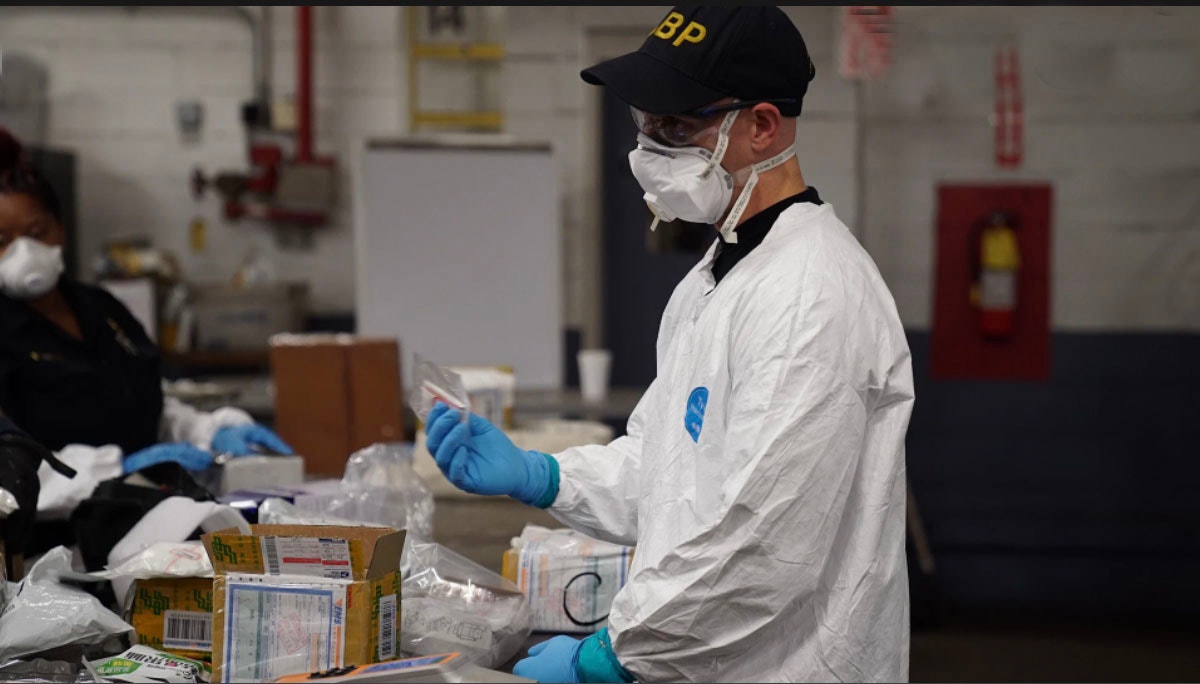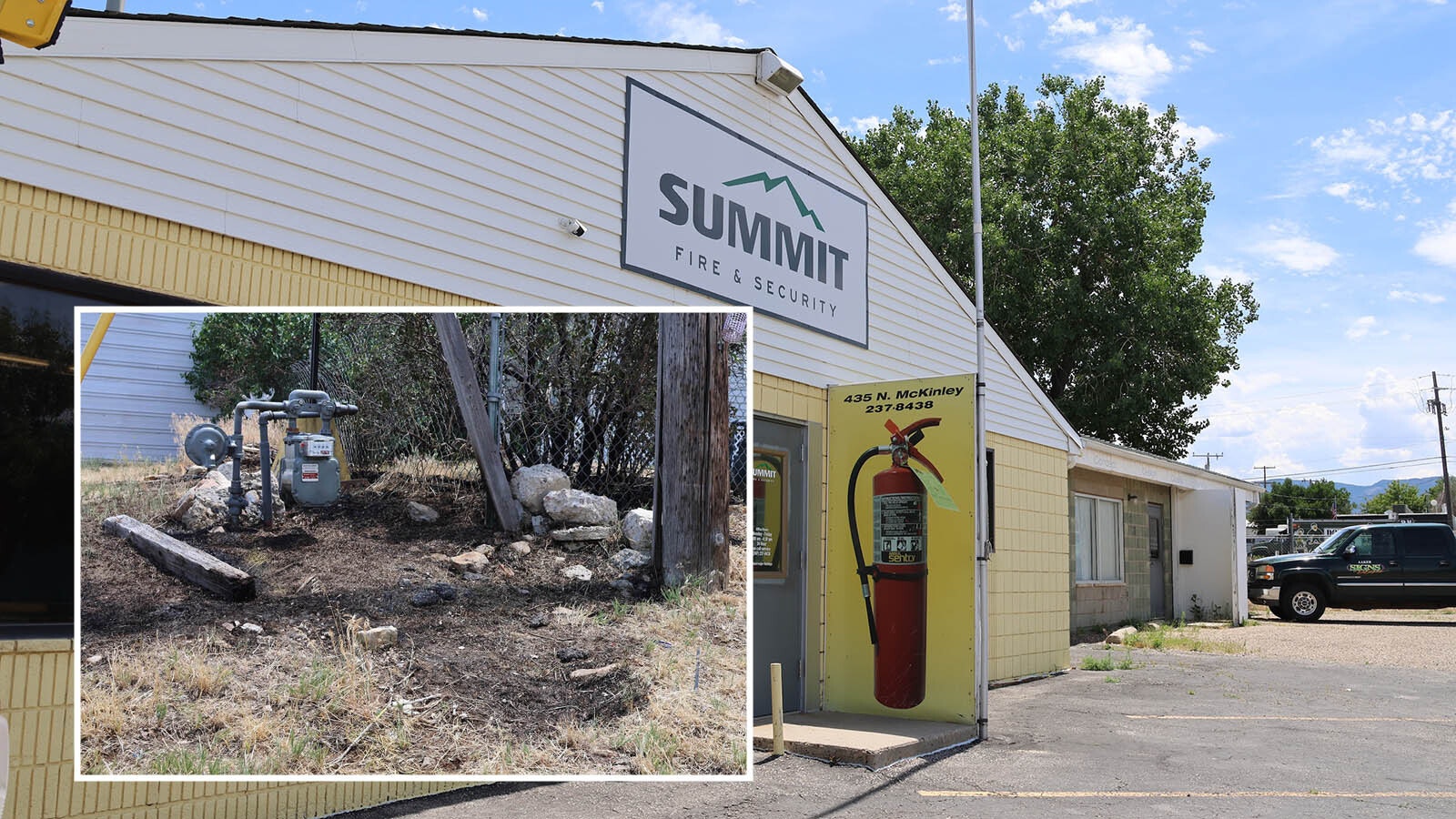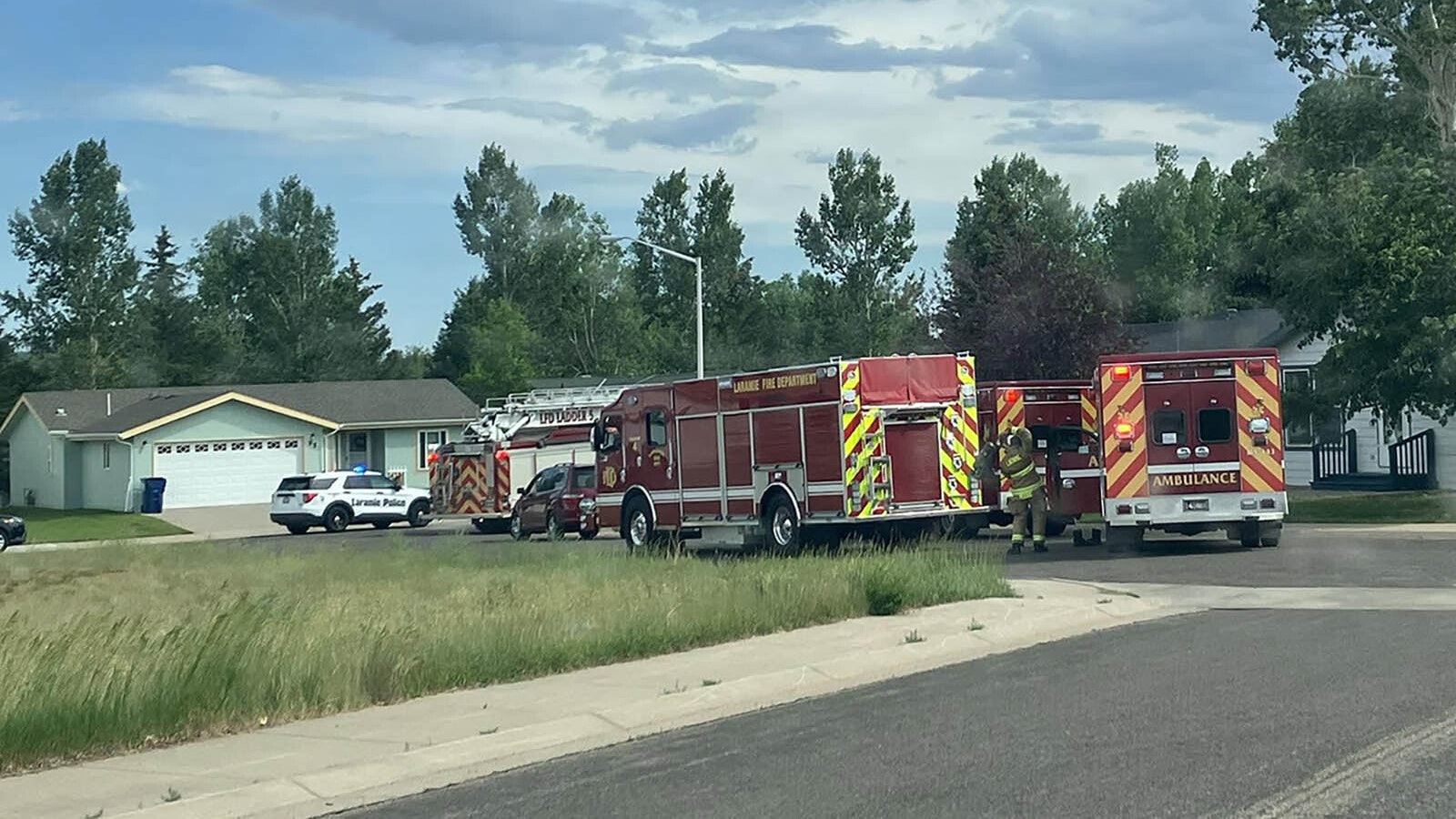The fentanyl-related overdose deaths of five young people in Commerce City, Colorado, in late February are setting off alarm bells for Wyoming law enforcement.
The five who died likely were using cocaine laced with fentanyl, according to David Tyree, resident agent in charge of the Drug Enforcement Agency in Cheyenne.
And Tyree, like other Wyoming law enforcement agents, is worried the lethal drug making its way into Wyoming as part of other drugs could cause more mass casualties such as the one in Colorado.
The problem is that buyers have no idea what they are getting when they’re purchasing illicit drugs off the streets, Tyree said. Where decades ago that might not have been as dangerous a proposition, today a person’s recreational drug purchase can put his or her life at risk with the advent of street fentanyl.
“These are not one-off events,” he said. “The game has changed because now the new card in the deck is one that will literally end a life. These people aren’t getting a second chance.”
Increasingly, the DEA and other law enforcement agencies are finding fentanyl in other drugs, from cocaine, marijuana, heroin and methamphetamine to illicit opioids masquerading as prescription pills. The drugs are being produced by drug cartels in labs south of the border, Tyree said, by amateur chemists who might not even know they are selling laced products.
“The people who are manufacturing these drugs are not pharmacists,” Tyree said. “You have cross-contamination and it might not even be intentional.”
What Is Fentanyl?
Legally administered, fentanyl is a powerful synthetic opioid that is similar to morphine but is 50 to 100 times more potent. It’s considered a Schedule II controlled substance and is typically prescribed after surgery or for pain associated with early-stage cancer and can be administered as a shot, a patch or in lozenge form.
The illegally manufactured fentanyl coming across the border is sold in powder form, dropped onto blotter paper, put in eye drops or nasal sprays or pressed into primarily light-blue pills stamped with “M30,” masquerading as prescription oxycodone. The illicit opioids typically contain none of the active ingredients of the legal pills, but rather contain fentanyl and other binders like sugar or acetaminophen, the active ingredient in Tylenol and other over-the-counter cold medicines.
The DEA began seeing it in the U.S. around 2011, according to Steve Kotecki, public information officer for DEA Denver, during the height of the opioid crisis once medical practitioners and law enforcement began cracking down on legal sales of opioids.
The illicit drug manufacturers figured out how to reverse engineer legal fentanyl, Kotecki said, and law enforcement began seeing a flood of illicit fentanyl into the United States, cresting by late 2018 and 2019. The new drug’s arrival led to a wave of overdose deaths seen primarily in the eastern and southern states.
“The cartels got ahold of a new market,” Kotecki said, “and have figured out how to illegally and clandestinely produce (fentanyl).”
The ingredients for illicit fentanyl are primarily being sent from China to Mexican cartels , which are mixing it in with other illicit drugs – either intentionally or unintentionally – because it’s cheap and highly addictive.
Its lethality is what makes it so dangerous, Kotecki said, because depending on a person’s size or tolerance, approximately two milligrams – roughly the size of 10-15 grains of table salt – can kill a person.
The drug’s production is not an exact science, and increasingly, it’s turning up in more of the drugs the DEA is seizing in the Mountain West and across the country.
Recent lab reports by the DEA indicated that four out of every 10 illicit “M30” pills tested have lethal amounts of fentanyl, Kotecki said, and 98% of the pills labeled as oxycodone are actually counterfeit.
Overdoses On The Rise
The DEA began sounding alarms in the spring of 2021 when overdose deaths involving fentanyl exceeded 100,000 nationally.
In Wyoming, overdose numbers are also on the rise.
In 2019, 11 Wyoming residents died from fentanyl-related overdoses, followed by 21 in 2020. The following year, this number more than doubled, increasing to 45 in 2021.
So far this year, 13 Wyoming residents have died of fentanyl-related deaths, according to Cori Davis, statistician with the Wyoming Vital Records Services.
Tyree noted that these overdoses involve people from all social spectrums, from soccer moms and college kids to underprivileged people in urban cities.
“The problem is everywhere,” he said. “I never imagined seeing it at this level, and I’ll be the first to say I’m scared by it. Right now, it’s never been more dangerous than to recreationally use drugs.”
Seizures of fentanyl in Wyoming are also hitting new record highs. According to data provided to Gov. Mark Gordon’s office by the Wyoming Department of Criminal Investigations, DCI seized 1,954 grams of fentanyl between 2019 and 2020.
In 2020, that figured dipped to 3 grams, but rose astronomically the following year to 17,324 grams and 11,267 counterfeit fentanyl pills seized by DCI and the Wyoming Highway Patrol in 2021.
The ease of access and porous International borders also create fluid pathways for these drugs to enter Wyoming communities, according to Gillette Police Det. Eric Small.
“We are seeing unbelievable amounts of controlled substances making their way into the U.S.,” Small said. “The game changer is the accessibility, and the first step is controlling the border.”
In April, Gordon joined 25 other states led by Republican governors in creating a “border strike force” to deal with the “chaos” at the southern border. Part of this mission, according to Michael Pearlman, communication director for Gordon’s office, is to tackle drugs coming in from Mexico.
“Wyoming is currently engaged in planning with other participating states about what assistance we may be able to provide through the Border Strike Force, as well as to gain valuable information as to how we can best protect our state from the flow of illegal drugs, including fentanyl,” Pearlman said. “The increase in fentanyl coming into America from Mexico has been horrific and well-documented.”
Shift In Cartel Production Strategy
In response to the purported crackdowns, the cartels, too, have seemingly shifted their business model, boosting the flow of their product into America and, as a result, Wyoming.
According to journalist Luis Chaparro, who went underground in the Sinaloa Cartel as shared on the “Shawn Ryan Show” podcast in April 2022, the cartels are shifting from super labs in remote areas to smaller labs in residential areas.
Chaparro reported that cartel members are being instructed to no longer drive flashy cars and be overt about their affiliation, but rather to take a more low-key approach as family men and average workers. The new labs are being run out of family homes with one cook producing up to 50,000 pills per day.
This new business model is more sophisticated, Chaparro reported, because these smaller labs are much harder to detect, and if busted, result in negligent impact on the overall business.
There are also many more of them, he noted. In the city of Culiacan, in the state of Sinaloa, Chaparro estimated there are around 200 labs operating into residential neighborhoods.
Supplies to make fentanyl are coming from China, Chaparro added, with Chinese chemists providing training on how to make the drug. Chaparro said he believes the recipes are deliberately being adjusted to create more lethal drugs.
He also said that the pills are dyed different colors for different geographical markets, and that there is a much more powerful drug than illicit fentanyl opioids in the pipeline. He did not specify what that drug might be or when it might be expected to show up in the U.S.
Unchecked Greed
As to the economics of why a drug dealer might not object to killing off customers, both Tyree and Kotecki said it’s a matter of pure greed.
“These are greedy individuals, and it’s just the cost of doing business for these people,” Kotecki said. “They are not going out of their way to kill people, but they’re not correcting people when it happens.”
The profit margins are exceptionally high, he noted. One pill that might cost 0.4 cents to make retails on the street for between $10 and $80, depending where it comes from in the trafficking supply chain hierarchy and on geographical location.
“It’s purely unchecked greed,” Tyree added. “It’s more sophisticated than I’ve seen in my (25-year) career,” he said.
He’s overhead conversations between drug dealers on wire taps discussing the death of a user. At least on a regional distribution or street level, dealers are aware people are dying, he said. Typically, they are told to lay low for a few days or move to another area.
“It’s not even a blip on their moral compass,” he said.
Taking Dealers Out Of The Community
In response to the surge of illicit drugs showing up in Wyoming, Tyree said that the DEA and other law enforcement agencies, as well as the U.S. Department of Justice, are taking a “corporate response” to getting these drugs off the streets.
“If you are dealing fentanyl in Wyoming, we will remove you from the community,” Tyree said. “You will go to jail as long as possible. It’s the only appropriate solution. If you are an end-user, we will get you help.”
Not only is the influx of drugs killing people, Tyree added, but it’s also affecting Wyoming communities with an increase of crime, thefts and violence among drug rivals.
“We are concerned for our communities,” he said. “These are our neighbors, and we want to work collectively to address the concern.”
Tyree acknowledged that it’s a complex problem and he draws a clear distinction between dealers and users.
As someone who grew up in a home where substance addiction was a problem, Tyree saw both the devastation it does to a family as well as the power of recovery. For this reason, he knew by seventh grade he planned to be a DEA agent.
“I saw how drugs were devastating my own family,” he said. “To this point, I’m not alone.”
Though law enforcement will continue its efforts to disrupt and dismantle drug trafficking organizations, Tyree said the larger issues remaining are tackling addiction and working on awareness and prevention to warn people of the deadly nature of these fentanyl-laced drugs.
“People are hurting, we understand,” he said. “There are alternatives to narcotics and opportunities to learn from pain and addiction.”
Those dealing, Tyree noted, will not be shown the same concessions.
“If you are dealing even one pill, you will go to jail,” he said. “We will find you.”
For more information about fentanyl and local resources to help with addiction and recovery, see the DEA website.





